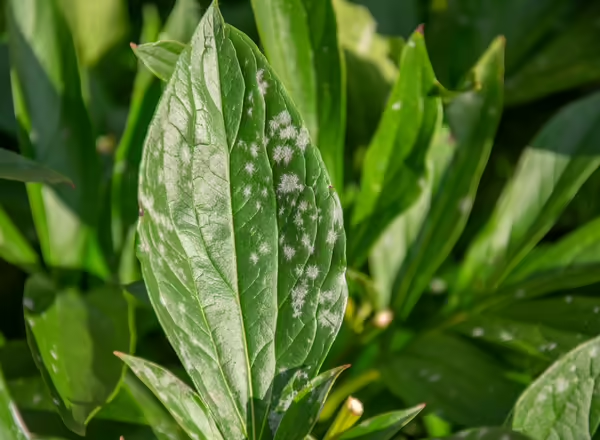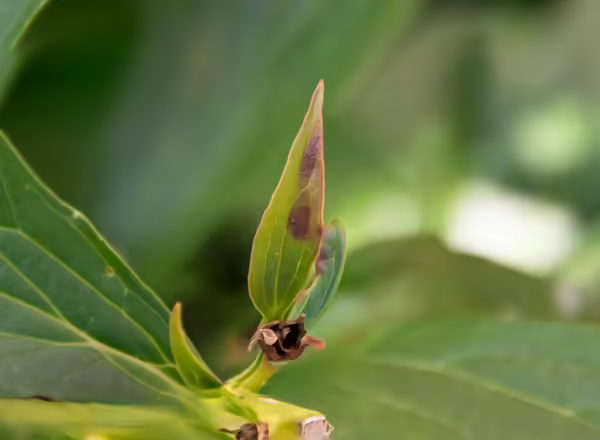
Peonies are a common sight in many yards. They are typically grown for their showy blooms in the spring but also have attractive foliage that can act as a backdrop in landscape beds. While peonies are relatively problem-free, a few diseases, powdery mildew and leaf blotch, show up fairly regularly on plants during the summer months. While these diseases typically don't pose a serious threat to plants, they can cause them to become rather unattractive, particularly late in the season.
Powdery mildew
Powdery mildew in peonies has become increasingly common over the years. Infections will begin as small white spots on the leaves. These spots can quickly grow to cover the entire leaf surface in a white-to-gray powdery growth.
Peony leaf blotch
Plants infected with peony leaf blotch (Graphiopsis chlorocephala) will develop purplish-brown spots on the upper surfaces of leaves, while the lower sides of the infected areas will be chocolate brown. Over time the spots will expand and may grow together, causing large blotches of diseased plant tissue.
This disease can also infect plants' stems, causing red to reddish-black spots to form. These infections are commonly referred to as peony red spot or peony measles.


Managing peony diseases
These diseases will overwinter on diseased plant material, so good sanitation is the best way to manage them. At the end of the growing season, cut peony plants down to the ground and rake out and remove all diseased plant material from your landscape (don't compost it). If you have particularly bad cases, removing the mulch around plants and replacing it with 2-3 inches of new mulch is also a good idea.
Leaf spot diseases, particularly powdery mildew, are more common in plants growing in the shade and in areas with poor air movement, as these conditions favor fungal growth. Planting peonies in full sun with good air movement around plants can help reduce disease problems.
If peony plants are crowded, they could be divided in the fall and spaced farther apart to increase air circulation. Plants can also be selectively pruned during the growing season to help improve air circulation.
As with all plants, try not to handle or work in peonies while the foliage is wet. This can potentially spread fungal spores to uninfected areas or to new plants. Also, avoid overhead watering as splashing water will spread the spores, and prolonged leaf wetness can increase disease.
Preventative fungicides can be applied when plants begin to appear in the spring (make sure to read and follow all label directions). It is important to note that fungicides will only protect unaffected foliage; once leaves become infected, little can be done (they won't get rid of an infection). Fungicides, however, are often not necessary to protect the health of the plant, and many gardeners choose to tolerate these diseases.
Good Growing fact of the week: Botrytis blight is another common disease of peonies. However, it does best in cool, wet conditions. It causes young shoots to wilt and die, flower buds to turn brown and not open, and infected leaves develop large dark brown spots.
Signup for our emails! Want to get notified when new Good Growing posts are available? SIGN ME UP
MEET THE AUTHOR
Ken Johnson is a Horticulture Educator with University of Illinois Extension, serving Calhoun, Cass, Greene, Morgan, and Scott counties since 2013. Ken provides horticulture programming with an emphasis on fruit and vegetable production, pest management, and beneficial insects. Through his programming, he aims to increase backyard food production and foster a greater appreciation of insects.